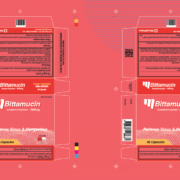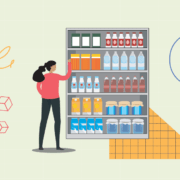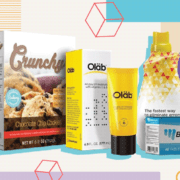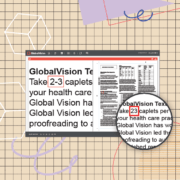The 5 Ways Sensory Packaging Separates You from Competitors
Date: August, 2018 | Category: Proofreading | Author: Ryan Szporer
Chances are you’ve come across sensory packaging before. It’s not a new trend by any stretch, but it definitely isn’t a strategy every manufacturer takes advantage of, at least not to its fullest extent.
This isn’t simply in reference to the experience of taking things out of the packaging, with “unboxing” actually being the process of filming the opening of a product it to capture and share the excitement with others. Unboxing does play a factor in successful branding, but, more than anything else, it’s about how to get consumers to that point, where they actually own it.
When done right, (multi-)sensory packaging is an extension of the brand and product itself through sight, touch, smell, hearing, and even taste. Here is how each sense can be a game-changer.
Sensory Packaging: Taste
Believe it or not, taste can enter into the equation when considering a purchase. Obviously, going around “tasting” packaging is out of the question (unless it’s edible packaging we’re talking about, and even then, please only in the comfort of your own home).
Still, it’s believed the package design can trigger memories and influence tastes. Taste sensory packaging can even seek to improve the taste experience like the Powerade bottle does through its “Big Mouth” system that features multiple openings. The other senses also contribute to how much taste can factor in, smell is the most closely related to it.
Sensory Packaging: Smell
Taste and smell are directly related to one another, as they work together when ingesting food. A specific odor can also trigger a memory of how something tastes, but, obviously, smell isn’t limited to just food. We’re talking about things like shampoo and other toiletries, not to mention less-obvious products like entire houses; Remember that old trick of putting out freshly baked cookies during an open house so buyers associate the smell with what could be their future home?
Consider how the way something smells can determine whether you want to own it or not, regardless of whether or not its scent is an actual feature. You wouldn’t be looking for a piece of clothing based on how it smells, because it can be washed, but you also wouldn’t buy a shirt that reeked in the store. You would stay away from it. That’s the sheer power of the sense.
With regard to the packaging itself, whereas in the past scratch-and-sniff panels helped consumers preview how their products smell, technology has advanced. Newer plastics have allowed shampoo and fabric softener companies to make the caps smell like their product. Special inks and coatings meanwhile help consumers more closely associate the branding and artwork itself with the scent, all without it spreading onto competitors’ products. That would be bad business.
Sensory Packaging: Hearing
If Harley Davidson can successfully link the sound of its motorcycle to its brand, and do so positively in spite of the over-the-top volume of one of its bikes speeding down the street, anyone can do it. Especially a company that manufactures mere consumer packaged goods instead.
For example, Becks beer bottles have longer necks, resulting in a specific pouring sound, and that’s not all. The German brewer once went so far as to etch playable songs in its bottles. On a slightly less grandiose scale, Snapple is associated with the sound its cap makes when a bottle is opened. An entire Pringles marketing campaign was meanwhile devoted to the slogan, “Once you pop you can’t stop,” referring to how you pop open a can of the popular chips.
Just think of how comforting the sound of popping open generic bubble wrapping can be. It evokes a sense of security and amusement at the same time. The goal of every company should be to accomplish something similar, all before consumers reach the actual product.
Sensory Packaging: Touch
The sense of touch means everything, or, rather, can mean anything. The packaging’s texture and finish, its angular design, and any raised layers thereon, all add metaphorical layers to a brand (or subtract in a worst-case scenario).
Even though, of all the senses, touch impacts buying decisions the least at 25%, it is still arguably one of the most important, as it’s the last one the consumer will use en route to the checkout line. After all, holding a product gives one a sense of ownership that can become a reality if the right packaging decisions are made during the manufacturing process.
It’s no coincidence that a reported 75% of new skincare products in the United States from 2009-2013 were sold using some form of soft-touch sensory packaging. It perfectly conveys the would-be value proposition to potential customers. It obviously wouldn’t have been unique, but that’s where other design features come into play.
These can run the gamut from the addition of rubber areas on bottles to make them easier to grasp or, like on some of Japanese manufacturer Toyo Seikan Kaisha’s beverage cans, angled facets to strengthen the side walls. Not only would the diamond-shaped facets also elicit a unique sensation on the fingertips of consumers, but they help refract light, to draw in the consumer in the first place. It just goes to show to what degree the senses can work together to help sell a product.
Sensory Packaging: Sight
So, as just alluded to, touch may be the last sense the consumer experiences before making the purchase decision, but sight is first. As a result, it’s the most critical.
In fact, without visuals, there really is no packaging. Everything from the artwork to the text on the packaging, like the product description or product safety information, goes toward ingratiating that product in the eyes of potential consumers. It’s why quality control with regard to sensory packaging and packaging, in general, is so critical, with an entire industry rapidly growing around the need for digital proofreading solutions. An elegant design and accuracy thereon each go a long way to securing brand equity.
In fact, more than any other sense, visuals impact the decision to buy a product. It’s estimated that sight influences the choice to make a purchase 58% of the time. All that means though is there’s 42% that’s unaccounted for, implying the need for synergy between the senses. Consumers have been granted five senses, so failing to take advantage results in companies leaving an opportunity to connect with them on the table. In the era of social media, during which consumers connect with each other more than ever before, that’s a serious mistake. Companies should want to leverage everything available to them in this day and age. It should make sense that consumers would too.
_________________________________________________________________________________________
Ensure your packaging is always error-free in record time with GlobalVision. Try it now for free.
Keep up with the latest in packaging updates and automated proofreading software. Sign up for our newsletter.









